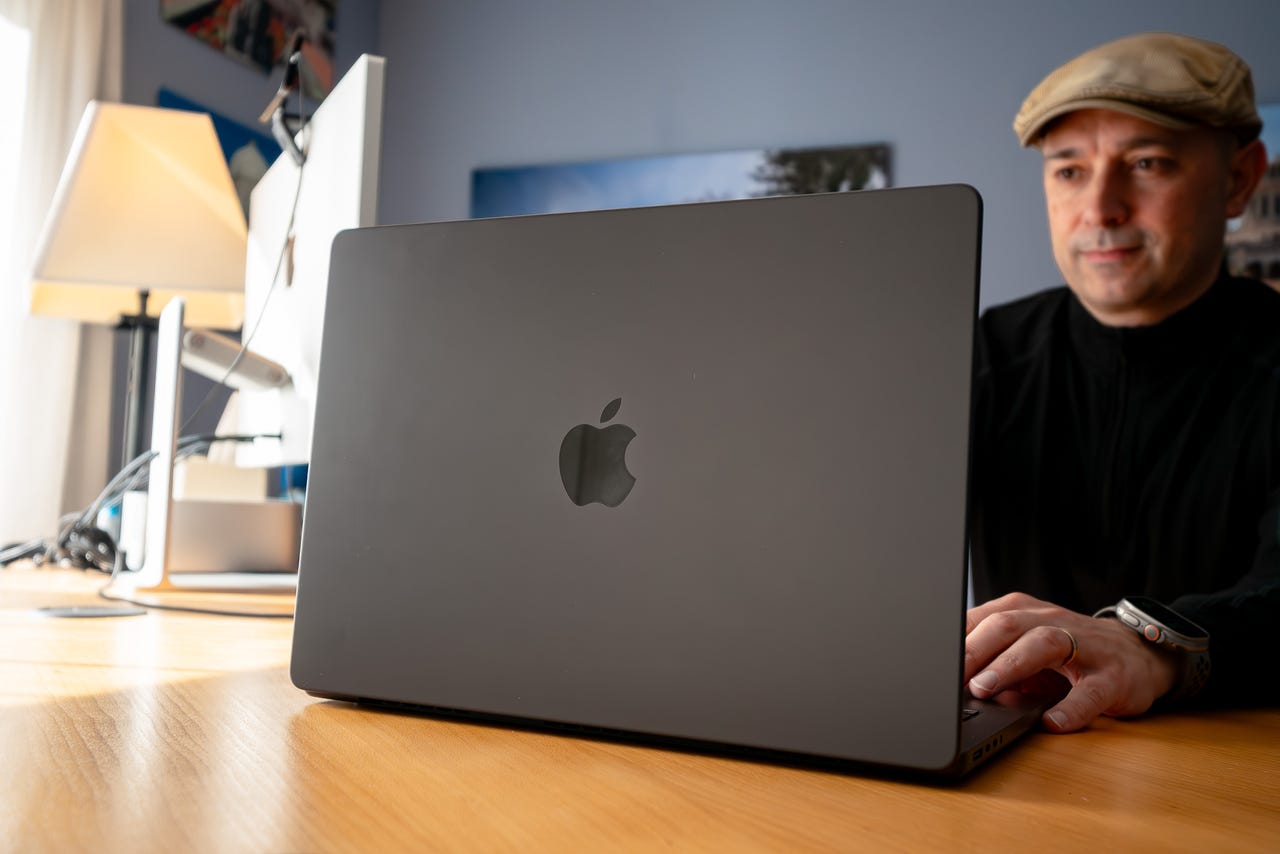'ZDNET Recommends': What exactly does it mean?
ZDNET's recommendations are based on many hours of testing, research, and comparison shopping. We gather data from the best available sources, including vendor and retailer listings as well as other relevant and independent reviews sites. And we pore over customer reviews to find out what matters to real people who already own and use the products and services we’re assessing.
When you click through from our site to a retailer and buy a product or service, we may earn affiliate commissions. This helps support our work, but does not affect what we cover or how, and it does not affect the price you pay. Neither ZDNET nor the author are compensated for these independent reviews. Indeed, we follow strict guidelines that ensure our editorial content is never influenced by advertisers.
ZDNET's editorial team writes on behalf of you, our reader. Our goal is to deliver the most accurate information and the most knowledgeable advice possible in order to help you make smarter buying decisions on tech gear and a wide array of products and services. Our editors thoroughly review and fact-check every article to ensure that our content meets the highest standards. If we have made an error or published misleading information, we will correct or clarify the article. If you see inaccuracies in our content, please report the mistake via this form.
M3 MacBook Pro vs M1 MacBook Pro: Should you upgrade to Apple's latest laptop?

It was just back in January that Apple upgraded its MacBook Pro from the M1 version that was released in 2021 to the M2, but we're already seeing the leap to the MacBook Pro M3, which is available now.
When any new model comes out, you probably start wondering if it's time to upgrade. If you already have the M2, there's really no reason to upgrade to the M3 outside of the slight performance bump and new color -- Space Black. The specs on the M3 are better than the M2, but not enough to warrant a whole new purchase.
Also: MacBook Pro (M3 Max) review: A desktop-class laptop for an AI-powered age
But if you have the M1 MacBook Pro, the question of upgrading becomes a little tougher. There are a few scenarios where the M1 would better suit you, and there are a few where the M3 is better. If you're trying to decide whether or not you should take the leap or you're simply in the market for a new MacBook, here's a breakdown of the key buying reasons.
Specifications
M1 MacBook Pro | M3 MacBook Pro | |
| Display size | 13 inch, 14 inch, and 16 inch | 14 inch and 16 inch |
| Colors | Silver, Space Gray | Silver, Space Gray, Space Black |
| Touch Bar | Yes (on the 13-inch model) | No |
Chip | M1 chip (5nm/N5) | M3 chip (3nm/N3B) |
| CPU and GPU | Up to 8 core for both | Up to 12 core and up to 18 core |
Unified memory | Up to 16GB | Up to 128GB |
| Storage | Up to 2TB SSD | Up to 4TB SSD |
Ports | Two Thunderbolt / USB 4 ports | Three Thunderbolt 4 (USB-C) ports, HDMI port, SDXC card slot |
| Battery | 58.2-watt-hour lithium-polymer battery with up to 17 hours wireless web and up to 20 hours Apple TV app movie playback | 72.4-watt-hour lithium-polymer battery with up to 12 hours wireless web and up to 18 hours Apple TV app movie playback |
| Camera | 720p FaceTime HD camera | 1080p FaceTime HD camera |
| Price | Starting at $999 | Starting at $1,599 |
You should buy the M1 MacBook Pro if...
1. You need more battery life
While you might expect the newest device to have the better battery life, the extra processing power does take a toll. In terms of pure battery life, the M1 beats the M3 by a decent margin. For general use, the M1 has up to 17 hours while the M3 only makes it to 12. Solely on streaming, the gap lessens a little at 20 hours compared to 18.
Also: MacBook Pro vs MacBook Air: How to decide which Apple laptop to buy
Now, it's worth noting that most people do use their MacBooks plugged in, and going more than half a day without access to an outlet is pretty rare. But, in the event that you often find yourself in situations where a power supply isn't readily available and you work very long days, the M1 should be your choice. This is, of course, by Apple's numbers.
2. You're doing mostly web-based work or don't need the absolute fastest option
The MacBook Pro has become the machine of choice for creatives, including designers, animators, engineers and developers. And while many programs used in those fields take a lot of muscle, the M1 can handle most of them just fine. In fact, ZDNET Editor in Chief Jason Hiner said there was "almost nothing I could throw at (the M1) that would slow it down."
If you use mainly online applications, the M1 will do the job. Of course, the M3 does bring a performance boost -- 2.5 times graphics rendering, Apple claims. So, if you work in a field where you're getting paid per job and need the fastest turnaround time possible for production, look to the M3. But if you're fine with the process taking a little more time, go for the M1.
3. You prefer a smaller overall size and touch bar
The M1 and M2 versions of the MacBook Pro had a 13-inch option, but that choice is missing from the M3. So, if you prefer a smaller layout for your MacBook, you'll want to look to the M1. Perhaps the bigger loss here, though, is the touch bar, which is no longer available on any M3 model. While most people weren't fans of the touch bar, which was essentially an OLED strip of buttons that changed depending on context, it still had its core users. Are you one of them?
You should buy the M3 MacBook Pro if...
Buy a MacBook Pro with an M3 Pro chip on sale now.
1. You're working outside or in other very bright environments
One of the biggest differences between the M1 and the M3 is the overall brightness. For SDR content, the M1 tops out at 500 nits while the M3 triples that with 1,600 nits. In a standard office environment, the former would be just fine. But in a sunny outdoor environment or a very bright indoor setting, this is going to be a noticeable difference. There are some third-party apps that let you increase the screen brightness of the M1, but if you want the best brightness, you'll need to get the newest device.
2. You're doing very intensive or time-sensitive tasks
While there's very little the M3 can do that the M1 just can't, the biggest difference comes down to how fast those tasks take. Finds from ZDNET's full review suggest the M3 renders at more than twice the speed of the M1, which is crucial for users in more content creation occupations.
Also: MacBook Pro (M3 Max) review: A desktop-class laptop for an AI-powered age
If you're working in a very fast-paced environment (say, live sports or entertainment) and seconds make the difference, it might be worth springing for the M3. Of course, you'll likely only notice the performance difference when dealing with high-end graphics and video. But power users will be right at home with the M3.
3. You want a new-conditioned laptop
It's been almost three years since Apple launched its M1-powered systems, so the chances of you finding one in brand-new condition today are rare. Instead, the fresher MacBook Pro with M3 chip is guaranteed to be available at your local Apple store, third-party retailers, and more. You can also expect better deals on the M3 model going into the holiday shopping season. For the M1, it's buying a second-hand device or keeping your fingers crossed that somewhere on the internet is still selling one in pristine condition.
